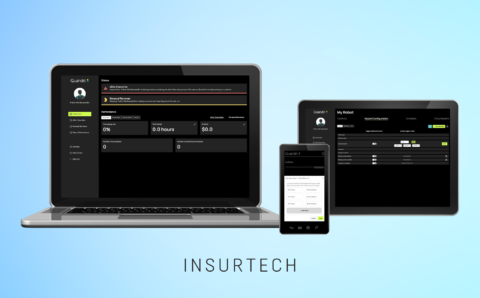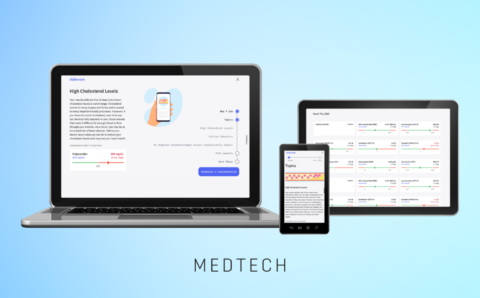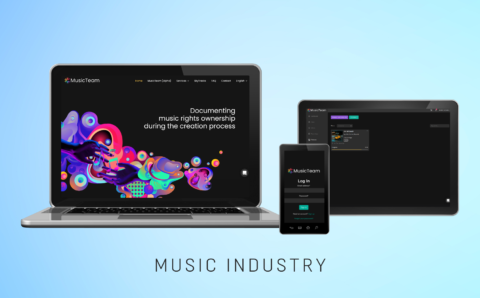
Discover our step-by-step guide on how to hire a dedicated software development team. Learn how to define project requirements, choose the right engagement model, evaluate skills, and ensure effective communication for successful collaboration.
Hiring a dedicated software development team is a reliable and fast way to employ the highest technical expertise and ensure the success of your project. This partnership model has a rich spectrum of benefits as opposed to freelancers or in-house developers, providing specialized skills, cohesive collaboration, and long-term commitment to your project. With a dedicated team, you can choose from a wide range of experts with different backgrounds and experiences, providing a comprehensive solution to complex and even the most challenging problems. Such teams offer effective communication, deep dive, and comprehension of your project’s requirements and nuances, bringing in outputs of the highest quality standards.
You can adopt excellent flexibility and scalability, as well as the ability to adapt to your product’s changing needs dynamically. A dedicated team is constantly involved in supporting your project, and their deep understanding of not only the project itself but your business concept as a whole enhances the quality of the results and makes the product tailored to your exact requirements. This aspect is very important and challenging to achieve when cooperating with freelancers who may have other projects and responsibilities or on-premise developers who may lack specialized skills.
Investing in a specialized software development team is a wise financial expenditure that guarantees the success and efficiency of your projects. Let’s discover how to hire a dedicated software development team and make your product prosperous and sought-after in your market industry.
Table of Contents:
Define Your Project Requirements
The primary factor of fruitful cooperation with software engineers lies in well-defined project requirements based on profound market analysis. Fortune reported that the primary reason startups fail is releasing products without demand. 42% of them defined the downfall as a lack of market needs for their offerings. Therefore, when dedicating time to product development, you should ensure alignment with market demand and clearly form the vision of your final product.
Understanding Your Project Goals and Objectives
Before hiring a dedicated software development team, you should get an accurate look at your project goals and objectives. Single out what you aim to obtain with your software, whether it’s elevating your business productivity, taking user service to a new level, or introducing an innovative product to the market. You should fully understand your product goals and align the development team’s endeavors with your vision.
List the Specific Skills and Expertise Needed for Your Project
Based on the project requirements, you can more effectively describe the specific skills and knowledge needed to bring the project to life efficiently. Identify which programming languages, frameworks, and technologies are relevant for implementing your project. Perhaps you need some narrowly focused knowledge for a specific solution or domain. Having a clear skills map makes your search much easier, and you can swiftly check whether the particular team has the necessary capabilities to fulfill your project requirements as projected.
Determine the Project Scope, Timeline, and Budget
Define the project scope by outlining the features, functionalities, and deliverables expected from the software. Establish an accurate timeline incorporating milestones, development stages, and possible challenges. For more precise financial management, you can set a budget that accounts for development costs, team salaries, infrastructure, and any additional investments. A successful and profitable project requires a well-balanced scope, timeline, and budget to ensure that your project remains on track and within financial constraints. As Failory states, 16% of startups come out unsuccessful due to financial obstacles, so you should have a wisely and precisely planned budget and be sure that you can cover all the expenses arising.
Choose the Right Engagement Model
When choosing a tech partner, you’ll discover a range of offerings within different cooperation models, each with its own peculiarities and benefits. In a nutshell, in the fixed-price model, you are charged a set and unchanged amount for a defined scope of work, providing predictability in costs. The hourly rate model speaks for itself – it implies expenses based on the time spent on the project, offering flexibility for adjustments but potentially leading to cost uncertainty. This approach allows you to hire a dedicated development team exclusively for the project’s duration, offering close collaboration and flexibility, albeit with higher upfront investment and ongoing management requirements.
Fixed-Price Model
In the fixed-price model, customers and developers agree on a set price for the entire project scope. With this model, you have clear budget expectations, a well-defined scope, and a cut down on financial risk for clients. Nonetheless, it lacks flexibility, so introducing changes to the project scope is pretty costly and may potentially compromise quality.
Hourly Rate Model
The hourly rate model allows you to invest in the actual time spent working on the project. It offers flexibility, opportunities for collaboration, and no upfront financial commitment. Still, as a client, you may face uncertain costs, potential overbilling concerns, and a lack of predictability in budgeting.
Dedicated Team Model
When hiring a dedicated development team, clients have a team exclusively dedicated to their projects for an extended period. Under such a model, you can achieve long-term commitment, scalability, and comprehensive expertise. However, it often requires a higher initial investment, effective coordination management, and dependency on external resources.
| Aspect | Fixed-price model | Hourly rate model | Dedicated team model |
| Cost predictability | Cost is predetermined and agreed upon upfront | Cost varies based on the hours worked | Generally, higher upfront cost but predictable ongoing expenses |
| Scope flexibility | Scope is typically fixed, changes may require additional costs | Allows for flexibility in adjusting scope as needed | Can adapt to dynamic requirements with dedicated resources |
| Client engagement | Limited involvement once project scope is defined | Continuous involvement to manage budget and priorities | High involvement required for ongoing coordination and management |
| Resource allocation | Resources are allocated based on agreed scope | Resources are allocated based on hours worked | Resources are exclusively dedicated to the project |
| Risk management | Risk is largely on the service provider for delivering within budget | Shared risk between client and service provider | Shared risk, with higher responsibility on client for managing team effectively |
Why a Dedicated Team Model may be Suitable for Long-term or Complex Projects
A dedicated team model is a powerful and credible option, providing long-term or complex project advantages. It provides a level of commitment and expertise that aims to handle the challenges of even more sophisticated, complex software development solutions, ensuring guaranteed expertise and efficiency. Let’s dive deeper into the benefits of hiring dedicated developers.
-
- Flexibility. The dedicated team model provides you with the flexibility to scale your expertise up or down based on project needs so your resources are used wisely.
- Tailored expertise. You can gather a team with the precise skill sets and experience required for their project, delivering high-quality output.
- Full control. Dedicated teams offer you full control over the project priorities, tasks, and workflow, allowing for greater alignment with project objectives.
- Continuous communication. With a dedicated team, ongoing engagement and collaboration foster a deep understanding of the project’s goals and requirements.
- Efficiency. The dedicated team model promotes efficiency as team members become well-acquainted with the project’s peculiarities and dive deeper into its implementation, ensuring accelerated delivery times and reduced ramp-up periods.
- Cost-effectiveness. Despite the initial higher upfront investment, the dedicated team model can be cost-effective in the long run as it liquidates the need for hiring, onboarding, and retaining on-premise experts.
- Adaptability. Dedicated teams can seamlessly adapt to ever-evolving project requirements and priorities, staying responsive to market conditions.
- Quality Assurance. A focus on maintaining high-quality standards throughout the project lifecycle is integral for dedicated teams, providing enhanced outcomes and client satisfaction.
- Long-term partnership. You can achieve prolonged partnerships with your service providers, resulting in better collaboration and trust, as well as mutual success and benefits.
- Risk mitigation. Management and resource allocation can be outsourced to a dedicated team, eliminating risks related to staffing, resource shortages, and project setbacks.
Research and Shortlist Potential Companies
How to hire dedicated developers and succeed? The first stage to find an effective and reliable partner consists of researching and shortlisting potential tech companies. In these terms, you should consider various factors to ensure the right fit for your project. Here they are.
Industry Experience and Similar Projects
Firstly, we recommend you find a dedicated team with a solid background in your industry or projects similar to yours. Relevant experience increases the team’s guarantee that it will grasp your specific necessities, challenges, and requirements, resulting in more effective solutions. For instance, if you would like to create a robust and scalable e-commerce platform that ensures a top-tier user experience, you should hire dedicated Python developers and search for partners knowledgeable in this particular technology.
Reviews, Testimonials, and Case Studies
Make sure to check reviews, testimonials, and case studies to assess the company’s reputation, reliability, and track record of successful projects. Positive feedback and evidence of past achievements can help you select a reliable partner with proven qualitative services.
Company Size, Location, and Culture Fit
Keep in mind factors such as company size, location, and culture fit. A larger company may ensure extensive resources and scalability, while a medium/smaller one may deliver a more personalized approach to your project, your business model as a whole, and flexibility. Location can impact your communication and collaboration with the team, while culture fit caters to alignment in values and working styles.
Evaluate Technical Skills and Expertise
Hard skills coupled with strong tech expertise are inalienable for ensuring a software development team is capable of meeting your project requirements. This investigation process typically covers tech interviews or tests to evaluate the team’s proficiency.
Conduct Technical Interviews or Tests
Technical interviews or tests allow you to assess the team members’ problem-solving abilities, coding skills, and familiarity with appropriate technologies. These assessments allow for determining whether the team can introduce the technical knowledge and experience to implement your project as you require.
Assess Proficiency in Programming Languages, Frameworks, and Tools
Evaluate the team’s proficiency in the programming languages, frameworks, and tools needed for your project. Look for experience with technologies relevant to your project’s stack and a demonstrated ability to adapt to new tools and solutions if necessary.
Check for Certifications, Training, and Continuous Learning
Review the team’s certifications, training programs, and efforts in continuous learning. Certifications and constant expertise elevation indicate a dedication to staying updated with industry best practices and upcoming technologies. With a culture of continuous learning, your team will remain equipped to address evolving project requirements and challenges.
Struggling to Find Python Experts in Ukraine?
Learn the proven strategies for sourcing and recruiting top-tier Python developers in Ukraine’s thriving tech scene.
Assess Communication and Collaboration
Soft skills are an equally important part of fruitful cooperation. Due to this fact, you should consider hiring a dedicated software development team that brings in transparency to communication, making your collaboration cohesive and efficient.
Evaluate their communication skills and responsiveness
Effective communication is essential for correctly comprehending project requirements, providing updates, and handling concerns as soon as they arise. Investigate the team’s responsiveness to such inquiries, clarity in their communication, and willingness to engage in regular meetings or status updates.
Consider time zone differences and language barriers
Time zone differences can impact communication and collaboration, which results in both benefits and drawbacks. With certain vendors, you may sometimes face delays in response times or scheduling conflicts. Still, reliable, dedicated teams can deliver 24/7 product support within the time zone difference. In case you need to facilitate real-time communication, make sure that the team’s working hours align with yours or that they are ready to adapt to your schedule. Besides, language barriers can hinder effective communication, so assess the team’s proficiency in the language of your project. You may select vendors from the countries with the EF English Proficiency Index (EF EPI) to make sure that your team has a profound English level.
Assess their ability to work collaboratively with your in-house team
Collaboration between the dedicated team and your internal professionals can facilitate smooth onboarding, enhanced communication, seamless integration, and robust knowledge transfer. Consider whether the dedicated team is able to work harmoniously with your in-house experts, share details, contribute to a positive work environment, and provide product development efficiency. Qualities such as adaptability, flexibility, and willingness to collaborate should be your primary priority to ensure a productive partnership.
Review Pricing and Contracts
Thoroughly review pricing and contract terms to avoid unpleasant surprises or hidden costs. Read the contract conditions carefully to ensure a smooth collaboration, hiring a dedicated development team to assist you within your project development roadmap.
Understand the Pricing Structure and Payment Terms
Take the time to understand how pricing is structured and the payment terms established. With any chosen cooperation model, you should achieve clarity on how costs accumulate and when payments are due. Obscure and hidden terms make efficient budgeting and financial planning impossible.
Check for Hidden Costs or Additional Fees
There is a range of costs that may be hidden at first glance and then arise when the contract is signed, and the partnership is set, so you should follow some tips to avoid such mishaps.
-
- Thoroughly examine the contract for any hidden costs or additional fees that may not have been initially discussed
- Look for charges related to extra revisions, additional features, or unpredicted project complexities
- Ensure clear communication and transparency regarding all potential expenses
- Verify that all costs and fees are clearly outlined in the contract
- Seek clarification on any ambiguous or vague terms related to pricing
- Discuss with the development team any potential scenarios that could incur additional costs
- Consider negotiating terms to mitigate or eliminate unexpected expenses
- Document all agreements and discussions regarding pricing and fees for further reference
- Regularly monitor project progress and expenses to identify any deviations from the agreed-upon conditions
- Address any discrepancies or unexpected charges faster to avoid financial disputes later on
Review and Negotiate the Contract Terms
The aspects of the contract include intellectual property rights, confidentiality agreements, and dispute resolution procedures. Be sure to protect your idea and project-related data from being leaked. If any terms are unclear or unfavorable in your view, don’t hesitate to negotiate with the software development team to ensure a fair and mutually beneficial agreement. Pay close attention to the intellectual property items to ensure that you retain ownership of the final product. We at PLANEKS are ready to sign a Non-Disclosure Agreement (NDA) on purpose, as your data safety is the first priority for us. It’s a legal contract between the clients and vendors that describes confidential material, knowledge, or information that the parties wish to share with one another for certain purposes but wish to restrict access to or by third parties. This way, we establish trust between the team and our partners.
Take this step seriously, even for a large corporation such as Google. Linwei Ding, a former Google engineer, has stolen proprietary information from Google while clandestinely working for two China-based tech companies. Ding is accused of transferring over 500 confidential files containing artificial intelligence trade secrets from Google to his personal account, with the intention of passing them on to Chinese companies seeking an advantage in the AI industry.
The theft occurred from May 2022 to May 2023, during which Ding copied data into the Apple Notes application on his company-provided MacBook and then uploaded it to his Google account as PDF files.
Onboard and Integrate the Team
Profound onboarding and integration of the software development team are essential aspects of how to hire a dedicated software development team and benefit from the partnership.
Conduct an Onboarding Session
Initiate the onboarding process with a comprehensive session to introduce the team and your in-house specialists to the project’s objectives, requirements, and timelines. Provide background details on the project’s concept, goals, and expectations. Promote open communication and answer any questions or concerns team members may have early on.
Set up Communication Tools and Project Management Software
Implement communication tools and project management software to facilitate seamless and handy collaboration and information sharing among team members. Choose platforms that accommodate various communication preferences and offer task assignment, progress tracking, and file-sharing features. According to CoAmplifi, organizations that consistently implement project management practices achieve a success rate of 92% in meeting project goals, while those with low project management maturity only achieve a 32% success rate, so opt for qualitative and convenient tools to elevate your team’s efficiency. Among the communication and online conference apps, we may recommend using Slack, Microsoft Teams, and Google Meet. As for the project management software, you may consider Jira, Trello, or Asana.
Define Roles, Responsibilities, and Expectations
Clearly define each team member’s role, responsibilities, and expectations within the output. Establish a hierarchy of accountability and communication channels to ensure clarity and efficiency. Encourage teamwork and collaboration while emphasizing individual accountability for assigned tasks and deliverables.
Establish Clear Communication Channels
Take care of communication at early stages when hiring dedicated developers to ensure that the members can easily reach out to each other within two clicks. Besides, this guarantees that all stakeholders are aligned and informed throughout the project lifecycle. 86% of employees and executives cite a lack of collaboration or ineffective communication as a cause of workplace failures, so the topic of communication is highly relevant.
Regularly Scheduled Meetings and Updates
Regularly scheduled meetings, such as weekly or bi-weekly check-ins, offer opportunities for stakeholders to discuss progress, address concerns, and align on priorities. These meetings help maintain cohesive workflow and effective collaboration, verifying whether everyone is on the same page regarding project aims and timelines.
Use of Project Management Tools for Tracking Progress
Project management tools like Trello, Jira, or Asana facilitate tracking progress, assigning tasks, and managing deadlines. These tools provide transparency into project status, allowing stakeholders to monitor progress in real-time and identify potential bottlenecks or issues upfront. Let’s compare their opportunities in case you’re wondering about the best platform to use.
| Feature | Jira | Trello | Asana |
| User Interface | Robust, feature-rich but complex | Simple, intuitive, easy-to-use | Modern, intuitive, customizable |
| Task management | Customizable workflows, suited for complex projects | Basic task management, excellent for simpler projects | Flexible task management, suitable for a variety of projects |
| Collaboration | Solid collaboration features, (like commenting, mentioning, and sharing attachments) | Collaboration features are relatively limited | Extensive collaboration tools (commenting, file sharing, and @mentioning) |
| Integration | Extensive integration capabilities with various third-party tools and services | Limited integrations in contrast to Jira and Asana | Iintegration options, including popular third-party apps and custom integrations |
| Pricing | Various pricing tiers available, including free, with pricing scaling based on features and users | Free plan available with limited features, paid plans offer more functionality | Free plan available with basic features, paid plans offer advanced features and customization |
| Customization | Extensive options for workflow customization and issue types | Limited customization compared to Jira, but offers Power-Ups for additional functionality | Highly customizable with custom fields, project templates, and automation options |
| Reporting | Great reporting capabilities with built-in charts, graphs, and customizable dashboards | Basic reporting features with the ability to export data, but lacks the depth of Jira’s reporting | Comprehensive reporting tools with customizable dashboards and project progress tracking |
| Scalability | Suited for large-scale projects and complex requirements | Better suited for smaller to medium-sized teams and projects | Suitable for teams of all sizes, with scalability options available |
| Mobile optimization | Fully-featured mobile app available for iOS and Android devices | Mobile app available with basic functionality for task management on the go | Fully-featured mobile app available for iOS and Android devices |
Open Lines of Communication for Feedback and Questions
Establish open lines of communication to make sure that team members feel comfortable providing feedback, asking questions, and voicing concerns. There’s a range of communication channels at your disposal; you can connect through email, messaging platforms like Slack, or dedicated communication channels. An environment where dialogue is valued promotes truly efficient collaboration, problem-solving, and project success.
Monitor Progress and Quality Assurance
Progress tracking and Quality Assurance processes go hand in hand with solid management of your software development project. In fact, high-performing product teams have 200x more frequent code deployments, striving to achieve top product standards.
Regularly review the team’s work and deliverables
With frequent reviews of the team’s work and deliverables, you ensure that the project progress stays on track and adheres to the desired quality levels. To do so, you should set up periodic checkpoints to assess progress, identify any deviations from the plan, and provide feedback to the team. Milestones and deliverables should essentially be tracked so that dedicated project managers can address any potential issues before escalation and make necessary adjustments to keep the project moving forward smoothly.
Implement quality assurance processes and testing
Quality Assurance processes and testing are the core stage for identifying and addressing any defects, performance failures, or inconsistencies in the software. This covers establishing quality standards, conducting in-depth testing at various stages of development, and implementing measures to improve overall product quality. By prioritizing quality assurance, teams can mitigate risks, enhance user experience, and ensure the software’s reliability and functionality.
Address any issues or concerns promptly
Effective project management implies effectively coping with any issues or concerns that arise with minimal losses. Proactively handled obstacles won’t delay project progress, not turn into larger problems, and minimize disruptions to the project timeline. Such responsiveness optimizes the workflow and delivers a high-quality product.
Build a Long-Term Relationship
Hiring dedicated developers and further building a long-term relationship is essential for ensuring ongoing success and productivity. Here are some key strategies:
Foster a Positive Working Relationship with the Team
Make the whole workflow and cooperation friendly, positive, and creative. Trust, and collaboration within the team, where each engaged member feels recognized and appreciated, enhances the development output. Actively listen to their ideas, concerns, and feedback, and take care of any challenges on the progress path. Make the efforts and contributions of your experts highly valued, motivating them for the new achievements.
Provide Opportunities for Professional Growth and Development
Invest in your team’s skill development through training, workshops, and certifications. Support their career aspirations by offering prospects for advancement and challenging projects. Their growth and knowledge acquiring will help you retain outstanding talents and also enhance the capabilities of your team.
Consider Long-Term Collaboration for Future Projects
If satisfied with their performance, consider extending your collaboration with the team for future projects or maintaining the current one. Ongoing cooperation provides familiarity with your company’s goals, processes, and culture, leading to smoother project execution and better outcomes over time.
Need a Focused, Flexible Dev Team?
Scale your development capacity effortlessly with dedicated experts. Tailor a team that fits your project perfectly.
Conclusion
Wise and efficient hiring is a crucial step toward guaranteeing the success of your projects. Let’s sum up this guide and answer how to hire dedicated developers. To recap, here are the key stages to consider:
-
- Define your project requirements. Clearly outline your project goals, scope, and timeline to ensure alignment with potential dedicated teams.
- Research and choose potential partners. Carry out thorough research to identify reputable software development agencies with the expertise and experience relevant to your project needs.
- Communicate effectively. Establish clear channels of communication with potential teams to convey project requirements, expectations, and timelines accurately.
- Opt for the right engagement model. Evaluate the pros and cons of fixed-price, hourly rate, and dedicated team models to determine the best choice for your case.
- Promote a positive relationship. Create a positive working ecosystem with your chosen team through open communication, trust, and collaboration.
- Eploy relevant tools. Adopt project management and communication tools to make your partnership efficient and cohesive.
- Building a long-term relationship. Ensure ongoing product maintenance, enhancement, upgrading, and support through ongoing cooperation with a reliable partner.
Take sufficient time to find the right dedicated software development team; remember to accurately evaluate your options and choose a partner that reflkects your project goals and values.
Take the next step in hiring the right team for your projects. Invest in a dedicated team and fill in the gap with the proven proven, obtaining commitment and support to bring your vision to life. A dedicated PLANEKS team can address any requirements you have, such as creating a tailored new software application, enhancing an existing product, or coping with the specific challenges within a complex project. Start your journey today and order a consultation from PLANEKS professionals to discover how our reliable, dedicated team will take your project to success.

Robot Factory
Robot Factory automates insurance workflows, reducing manual effort and improving document management, leading to a 90% increase in efficiency.

Elaborate
Elaborate now offers a platform that turns complex lab results into actionable insights with automatic notifications and educational support.

MusicTeam
We helped MusicTeam launch v1, enabling easy metadata management for artists and securing a grant for future growth & cultural development.
FAQ
The frequently asked questions on hiring a dedicated software development team.
What is a dedicated software development team?
A dedicated software development team is a group of professionals exclusively assigned to work on a specific project for a single client. In contrast to freelancers or in-house developers, dedicated teams are engaged in the client’s project for an extended period, offering specialized skills, profound support, and focused attention. These teams often comprise project managers, developers, designers, testers, and specialists necessary to deliver comprehensive solutions.
How much does it cost to hire dedicated developers?
If you’re wondering how to hire a dedicated remote employee or assemble the whole team, you should prepare a budget based on location, expertise, experience level, and project requirements. For your better orientation, rates for dedicated developers range from $25 to $150 per hour, with differences based on geographical location and skill level. Additionally, some companies offer monthly rates for dedicated team engagement, which can range from $5,000 to $30,000 or more, depending on team size and expertise. Contact PLANEKS representatives, and we’ll consult you on the dedicated team composition and service costs.
Why should you hire dedicated developers?
Hiring dedicated developers offers several advantages over other engagement models. Firstly, dedicated teams ensure specialized competence, ensuring that your project benefits from the skills and experience of fully engaged professionals with specific knowledge relevant to your individual demands. In addition, dedicated developers offer long-term involvement, delivering continuity, consistency, and a comprehensive view of your project goals. Last but not least, with this cooperation model, you stay highly flexible and scalable, with an ability to adjust resources according to project needs, accelerating delivery times and achieving higher quality outcomes.
Where do you find dedicated developers?
There are several avenues for finding dedicated developers. The most credible option is to cooperate with established software development agencies or outsourcing companies that specialize in providing dedicated team services, like PLANEKS. Such IT vendors often have access to a pool of talented professionals with diverse skill sets. Do your research with platforms like LinkedIn, Toptal, and Upwork.
How can you reduce dedicated team hiring costs?
Hiring dedicated development teams is a cost-effective model in the long run. Still, there are several strategies you can adopt to minimize upfront expenses:
-
- Optimize team size. Assess project requirements accurately to determine the optimal team size. Avoid overstaffing, as this can lead to excessive expenses.
- Consider offshore or nearshore teams. Hiring developers from regions with lower labor costs can significantly reduce expenses while maintaining flawless service quality.
- Negotiate pricing. Discuss rates with software development agencies to secure competitive pricing that fits your budget.
- Invest in long-term partnerships. Establishing long-term relationships with dedicated developers can lead to volume discounts and more beneficial terms over time.

